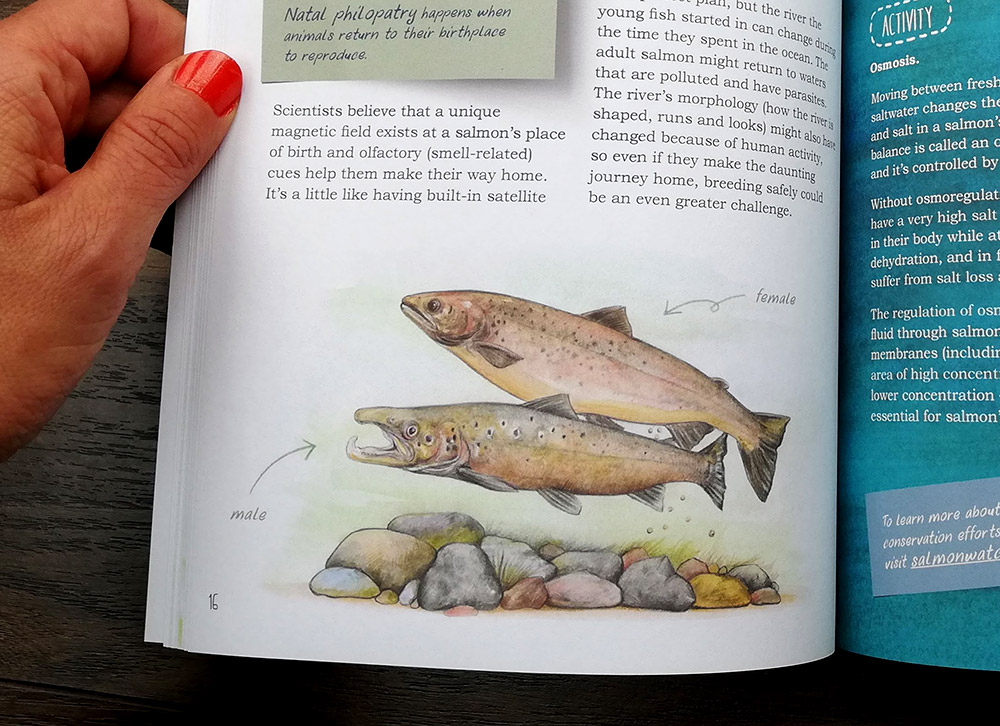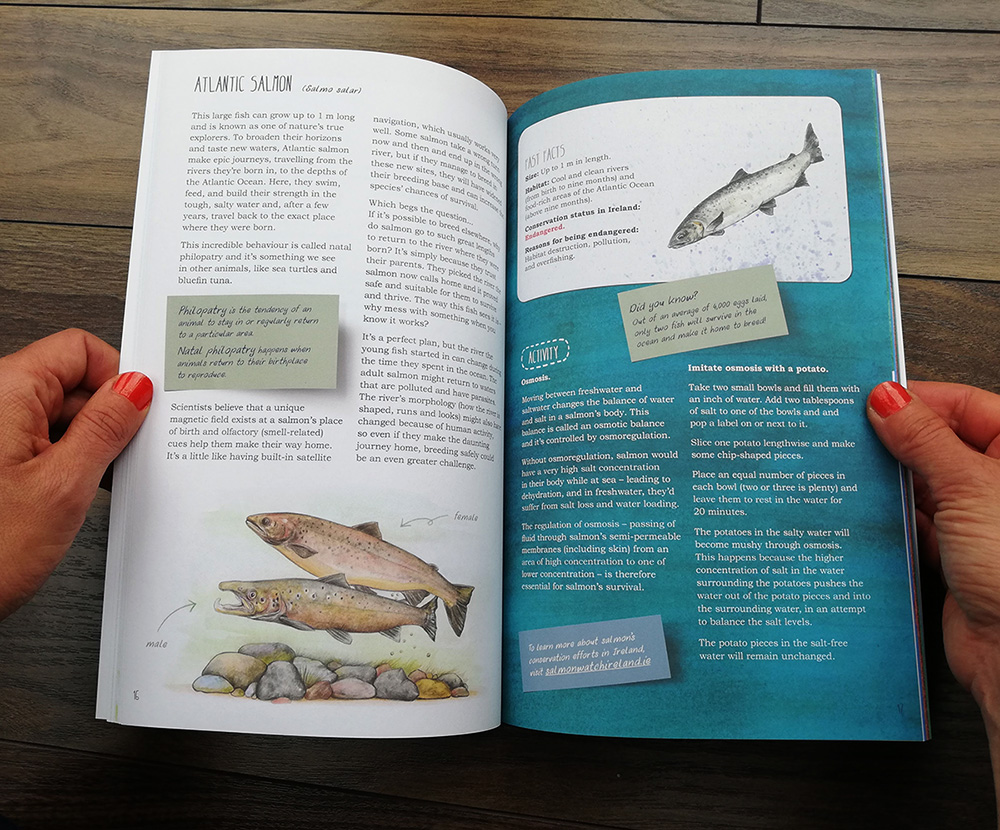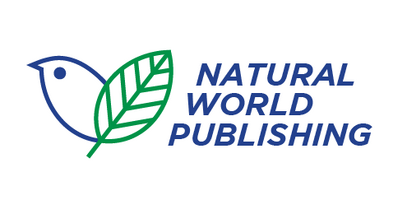Atlantic Salmon: One of Ireland’s remarkable creatures
The Atlantic Salmon is not just any fish; it’s a symbol of nature’s resilience and a crucial part of Ireland’s natural heritage. Featured in Aga Grandowicz’s ‘Remarkable Creatures: A Guide to Some of Ireland’s Disappearing Animals’, the Atlantic Salmon’s story is as compelling as it is urgent.
What is the Atlantic Salmon?
The Atlantic Salmon, scientifically known as Salmo salar, is a remarkable species known for its incredible migratory patterns. These fish have a sleek, silver body that can turn a deep, mottled brown during spawning. They are known for their distinctive adipose fin and large, sharp teeth, which make them formidable predators in their natural habitats.
The Lifecycle of Atlantic Salmon
Spawning
Atlantic Salmon begin their lives in the freshwater rivers of Ireland. During the spawning season, typically from October to January, adult salmon travel from the ocean back to their natal rivers. This journey, often covering thousands of kilometres, is one of nature’s most impressive feats.
Freshwater Phase
Once the eggs hatch, the young salmon, known as alevins, remain in the gravel beds of rivers. They grow into fry and then into parr, sporting distinct vertical stripes. Depending on environmental conditions, this phase can last from one to four years.
Sea Phase
The parr undergo a transformation into smolts, adapting to the saltwater environment. They then embark on an oceanic adventure, travelling to the nutrient-rich waters of the North Atlantic. Here, they spend one to four years growing into adults.
Return to Freshwater
Mature salmon, driven by instinct, return to their birthplace to spawn, completing the cycle. This journey is perilous, and many do not survive due to natural predators and human-induced threats.
Habitat of Atlantic Salmon
Atlantic Salmon thrive in both freshwater and marine environments. In Ireland, they inhabit clean, fast-flowing rivers with gravel beds for spawning. Key rivers include the River Shannon, River Moy, and River Blackwater. In the ocean, they are found in the North Atlantic, feeding on a diet of fish, squid, and crustaceans.
Atlantic Salmon in Irish Culture
The Atlantic Salmon holds a special place in Irish culture and history. Historically, it was a vital food source and a symbol of abundance. In Irish mythology, the Salmon of Knowledge is a legendary creature that grants wisdom to those who eat it, further cementing the fish’s iconic status.
Current Conservation Status of Atlantic Salmon in Ireland
Today, the Atlantic Salmon faces significant challenges. Once abundant, their numbers have dramatically declined due to various factors. In Ireland, it is regarded as an endangered species. The International Union for Conservation of Nature (IUCN) lists them as near threatened, highlighting the need for concerted conservation efforts.
Threats to Atlantic Salmon
Habitat Loss
Human activities, such as dam construction and river modifications, have drastically altered salmon habitats. Dams impede their migratory routes, making it difficult for them to reach their spawning grounds.
Overfishing
Commercial and recreational fishing have also contributed to the problem. While regulations exist, illegal fishing and bycatch remain significant threats.
Pollution
Pollutants from agricultural runoff, industrial activities, and urban development degrade water quality, affecting salmon health and spawning success.
Climate Change
Rising temperatures and changing oceanic conditions disrupt the delicate balance of ecosystems that Atlantic Salmon depend on. Altered river flows and warmer waters pose additional challenges to their survival.
Conservation Efforts
Government Initiatives
The Irish government has implemented various measures to protect Atlantic Salmon, including fishing regulations, habitat restoration projects, and the establishment of protected areas.
NGOs and Local Community Efforts
Non-governmental organisations and local communities play a crucial role in conservation. Initiatives like river clean-ups, habitat restoration, and public awareness campaigns have made significant impacts.
International Cooperation
Given the migratory nature of Atlantic Salmon, international cooperation is vital. Organisations such as the North Atlantic Salmon Conservation Organisation (NASCO) work to promote sustainable management across borders.
How You Can Help
Sustainable Fishing Practices
Adopting sustainable fishing practices is essential. This includes respecting fishing seasons and catch limits and using methods that minimise harm to other wildlife.
Supporting Conservation Organisations
Donating to or volunteering with organisations dedicated to salmon conservation can make a significant difference. These groups often rely on public support to fund their efforts.
Reducing Personal Environmental Impact
Simple actions like reducing plastic use, conserving water, and supporting policies that protect natural habitats can collectively help safeguard the environment for Atlantic Salmon.
Why Saving the Atlantic Salmon Matters
Saving the Atlantic Salmon is not just about preserving a species; it’s about maintaining ecological balance, protecting cultural heritage, and ensuring biodiversity. Their presence in rivers and seas indicates healthy ecosystems, which benefit all life forms, including humans.
Future Prospects for Atlantic Salmon
While challenges remain, there is hope. Conservation efforts are gaining momentum, and with continued support, the future of Atlantic Salmon can be secured. Ensuring these remarkable creatures thrive requires a collective effort from governments, communities, and individuals.
The Role of ‘Remarkable Creatures: A Guide to Some of Ireland’s Disappearing Animals’
Aga Grandowicz’s book, ‘Remarkable Creatures: A Guide to Some of Ireland’s Disappearing Animals’, is written for children, and it shines a spotlight on Ireland’s disappearing animal species, including the Atlantic Salmon.
The book is filled with practical activities dedicated to each of the described animals, so if your child loves learning about nature and how to protect it, this book will make a perfect and practical gift.
FAQs
What is the lifespan of an Atlantic Salmon?
Atlantic Salmon typically live for about 4 to 6 years, but some can live up to 13 years, depending on environmental conditions and their migratory patterns.
How can I identify an Atlantic Salmon?
Atlantic Salmon have a streamlined, silver body with a few dark spots above the lateral line. During spawning, they develop a darker, reddish-brown hue.
Where can I see Atlantic Salmon in Ireland?
Atlantic Salmon can be seen in rivers like the River Shannon, River Moy, and River Blackwater, especially during their spawning season in autumn and early winter.
What are the main threats to Atlantic Salmon?
The primary threats are habitat loss from dam construction, overfishing, pollution, and climate change impacts.
How can I contribute to the conservation of Atlantic Salmon?
You can contribute by practising sustainable fishing, supporting conservation organisations, reducing your environmental impact, and spreading awareness about the importance of protecting Atlantic Salmon.



